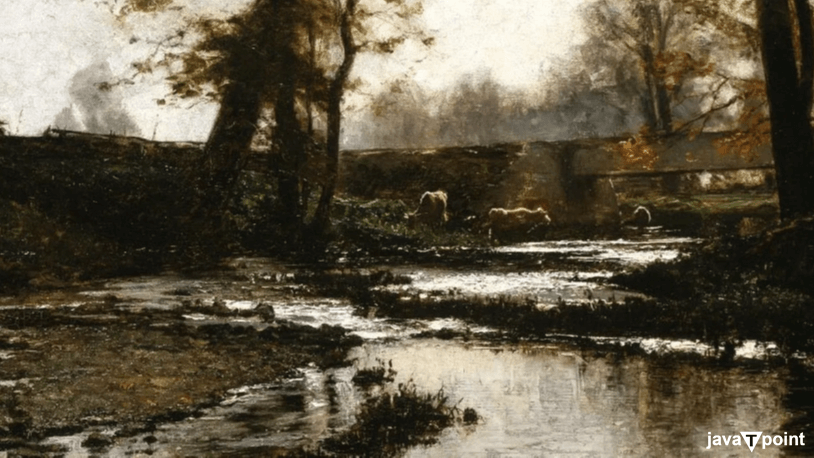Journey to the Interior By Margret AtwoodOverviewThe book "Journey to the Interior" is written as an extended metaphor for Margaret Atwood's complex trip inside herself. The mountainous areas of the unknown surround the mind, a complicated and seemingly unreachable region shrouded by a wide variety of concepts. Yes, it is hazardous for people to wander about there alone. Atwood describes in this poem how she often enters her head to get inspiration for her poetry or other creative endeavors. She tries to remain calm during the voyage because she will be lost forever if she doesn't. 
About AuthorCanadian author Margaret Atwood was born on November 18, 1939, and she is well known for her poems, novels, & literary criticism, among other genres. Over the course of her career, she has received several honors, including the Booker Prize. She is an innovator who has worked on robotic and remote writing technologies in addition to her literary activities. Atwood made her writing debut at the age of nineteen with the collection of poetry Double Persephone (1961). One of the most prolific authors on the Canadian literary landscape, Atwood has published several collections of poetry, novels, and essays. Her subjects are provocative, contentious, and audacious. She is well known for her novels, including Alias Grace, Surfacing the Edible Woman, and The Handmaid's Tale, as well as her contentious critical writings, including Survival: A Thematic Guide to Canadian Literature & Strange Things: The Malevolent North in Canadian Literature. She has written several essays on diverse subjects as well as collections of poems as well as short tales. 
SummaryA steep area that seems level from a distance is described at the beginning of "Journey to the Interior." As the lyrical character approaches it, she discovers a route over hills as boundless as the grasslands. The speaker can't go any further because of a cliff. She has encountered several difficulties while traveling. This region's location is not very accessible. The absence of trustworthy maps for directions might cause an unskilled mind to get lost. In addition, the speaker feels as though she is constantly going around in circles, never discovering new areas. She finds it difficult to maintain her composure because of this. In contrast to other landscapes, she can more quickly get lost in that risky area. ThemeAtwood uses a number of analogies to describe her journey to the uncharted parts of her mind throughout the poem. She compares the mind to an inaccessible, steep environment. She visits there more frequently, which causes her to become caught in the web more. She finally cautions readers not to follow her path after understanding the intricacies of the mind. Someone could go insane as a result of it. Atwood illustrates the deep beauty and inaccessibility of the human psyche in this way. ConclusionThe poem is about the mysterious nature of the human mind and the process of self-discovery. In the course of the poem, Atwood employs a number of metaphors to describe her journey into the uncharted territories of her mind. She compares the mind to a mountainous terrain devoid of any points of entry. Frequently asked questions1. What is the subject of "Journey to the Interior"? The poem "Journey to the Interior" by Margaret Atwood explores the poet's mental trip and how she struggles to distance herself from her inner world. 2. How does Margaret Atwood characterize her voyage into the interior? Atwood discusses her voyage by contrasting its similarities and differences with actual journeys. She paints a steep terrain that obstructs her view. She finds herself surrounded by unending plains as she draws nearer. Finally, a hard cliff forces her to turn back. 3. What is the "interior" in Atwood's "Journey to the Interior"? The metaphorical "interior" here refers to her thoughts. She compares the exterior of her body to a house and the interior to a home. 4. What two kinds of travels does Margaret Atwood discuss in "Journey to the Interior"? The first voyage is made by a creative person in search of ideas in their head. At the same time, the second voyage is an actual travel in a dangerous environment. 5. Why is the "journey to the interior" difficult? The voyage is complex since there is no map to direct a traveler. In addition, confusion is caused by the little aspects of the mind. 6. What risks does Margret Atwood see in the journey? Only a select handful has returned from those hidden lanes of the mind, where many have gone. The explanation is that a compass cannot be used to get directions or make a call for assistance. These factors increase the hazard of this mental voyage.
Next TopicUncle Podger Hangs a Picture Summary
|
 For Videos Join Our Youtube Channel: Join Now
For Videos Join Our Youtube Channel: Join Now
Feedback
- Send your Feedback to [email protected]
Help Others, Please Share









